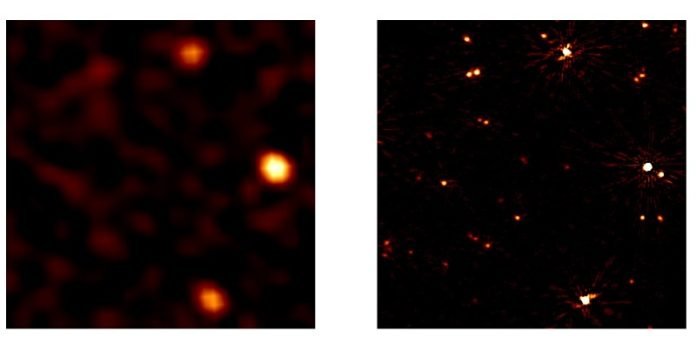
An international team of researchers led by astronomers from Leiden University in the Netherlands has achieved a groundbreaking feat by producing the first clear radio maps of the universe at low frequencies.
They accomplished this by developing a new calibration technique that bypasses the disturbances caused by the Earth’s ionosphere.
This achievement, reported in the journal Nature Astronomy, opens up new possibilities for studying the universe.
The ionosphere, located about 80 kilometers above the Earth, usually interferes with observations at low radio frequencies (between 16 and 30 MHz). This interference made it seem impossible to get clear images at these frequencies.
However, the researchers used the LOFAR telescope in Drenthe, the Netherlands, one of the world’s best low-frequency radio telescopes, to overcome this challenge.
To test their new technique, the team studied galaxy clusters that had previously only been observed in detail at higher frequencies.
The results were astonishing. The new images showed that radio emissions from these clusters are not evenly spread but instead form spot patterns. “It’s like putting on a pair of glasses for the first time and no longer seeing blurred,” said Christian Groeneveld, the research leader from Leiden University.
The motivation for this research stemmed from recent advancements in calibrating radio images at higher frequencies, around 150 MHz. Reinout van Weeren, also from Leiden University and the originator of the idea, explained, “We hoped that we could extend this technique to lower frequencies, below 30 MHz, and we succeeded.”
Currently, the researchers are processing more data to map the entire northern sky at these lower frequencies. This new calibration technique allows astronomers to study phenomena that were previously hidden. One exciting potential application is the detection of exoplanets orbiting small stars. Groeneveld adds, “There is, of course, a chance that we will eventually discover something unexpected.”
This breakthrough in radio astronomy not only enhances our understanding of the universe but also opens up new avenues for future discoveries.
By overcoming the limitations imposed by the Earth’s ionosphere, astronomers can now explore low-frequency radio waves with unprecedented clarity.



